July’s sizzling temperatures have helped me realize that I am, indeed, a little lizard. How else am I to explain how much I loved being out and about full-sun mid July in Utah?
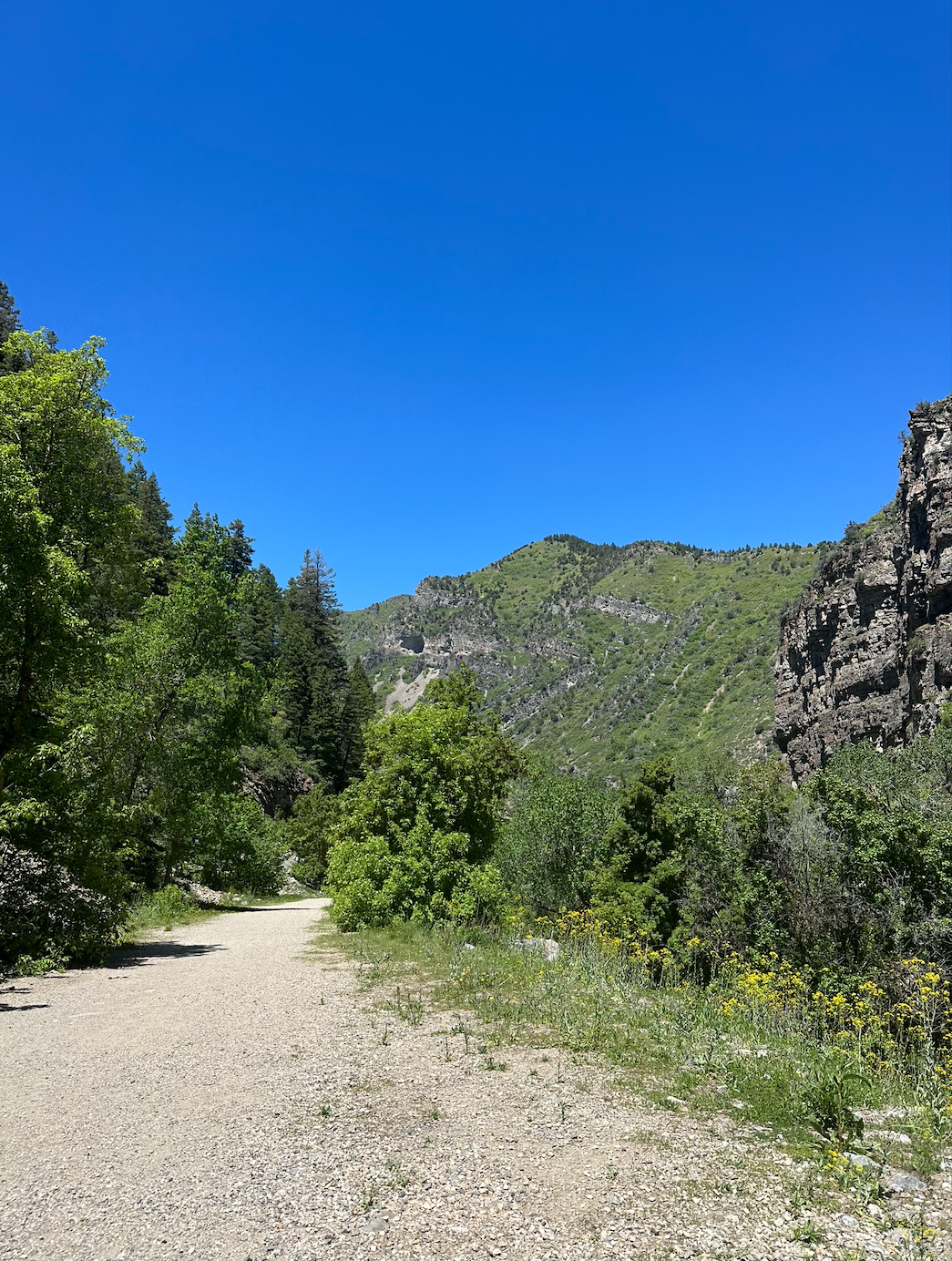
The beautiful landscape and weather make this easily one of the best offices I’ve had the pleasure of working in.
There’s a particular trail we can’t seem to stop revisiting due to the amount of target species we are finding. Art Nord’s Wheeler Creek trail has truly been a gold mine of harvestable populations! The list currently consists of Chaenactic douglasii, Eriogonum heracleoides, Eriogonum umbellatum, Lomatium dissectum, and Purshia tridentata.
We’ve completed a few collections, unfortunately, we now know what it’s like to miss a population. When we first started, Balsamorhiza sagittata (BASA) seemed to be everywhere. As we began scouting for new ecoregions and populations we took BASA’s abundance for granted…missing a population has been extremely frustrating but, I try to stay positive in that we’ll collect from another population and that the particular population we missed will likely flourish next season.
In other news, this past month also provided me the luxury of camping for a week in the Heber-Kamas east zone with the Botany department and Student Conservation Association (SCA) Interns where I had the opportunity to act as a botany tech lead! We worked on multiple surveys for two proposed timber sales (Silver Meadows Timber Sale and Flytree Timber Sale) as well as two large sections of a fuels reduction project. Throughout the 698 acres we kept our eyes peeled for Threatened, Endangered, and Sensitive (TES) species: Botrychium crenulatum, Botrychium lineare, Corydalis caseana ssp brachycarpa, Cyprepedium fasciculatum, and Cypripedium parviflorum. Fortunately for me, I’d seen a few in previous surveys so I knew what to look for and could help provide tips and guidance for others. We didn’t find anything in the proposed polygons however, a decent population of the tiny Botrychiums were spotted in a meadow not too far from camp. The little guys were no longer than my pinky!

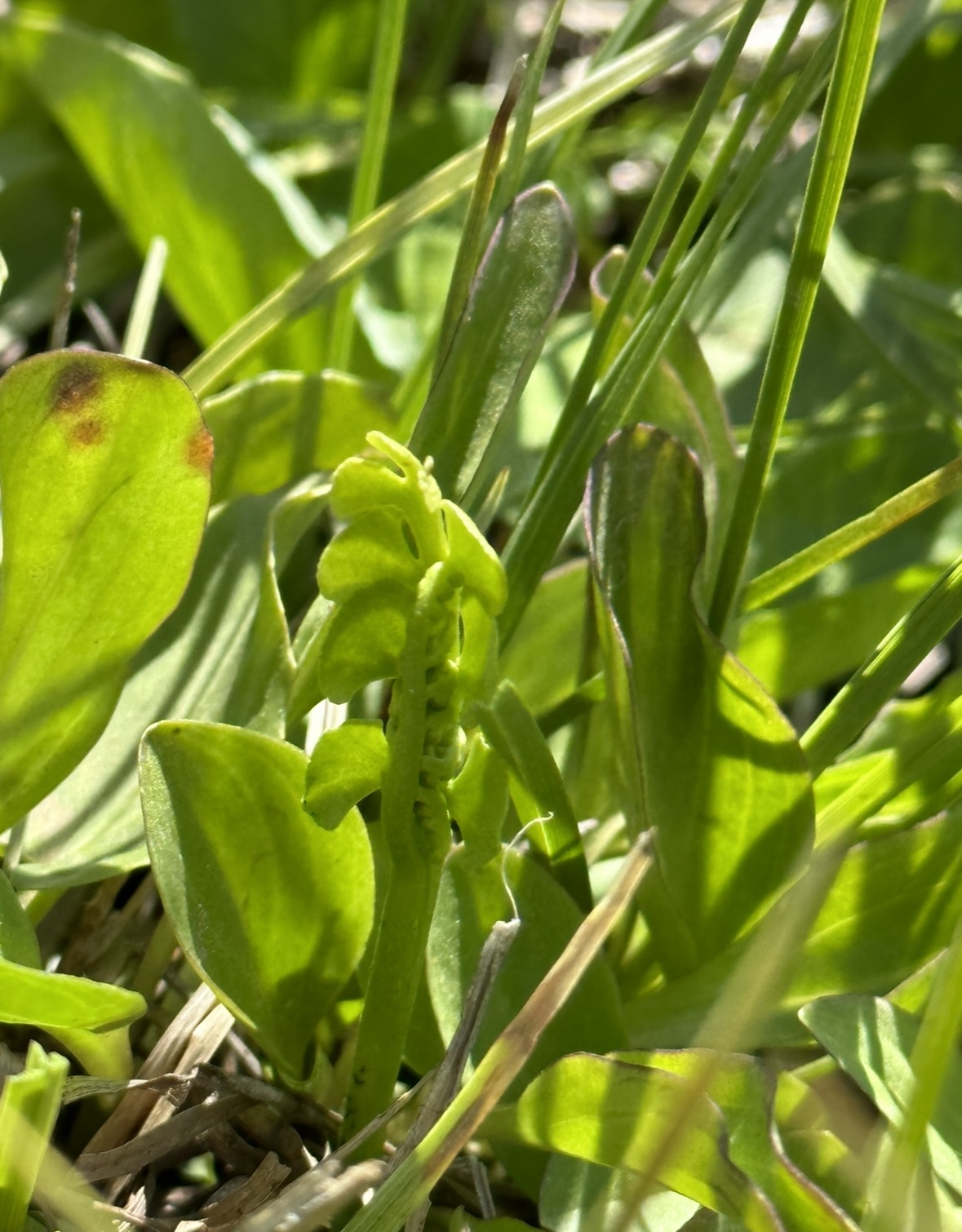


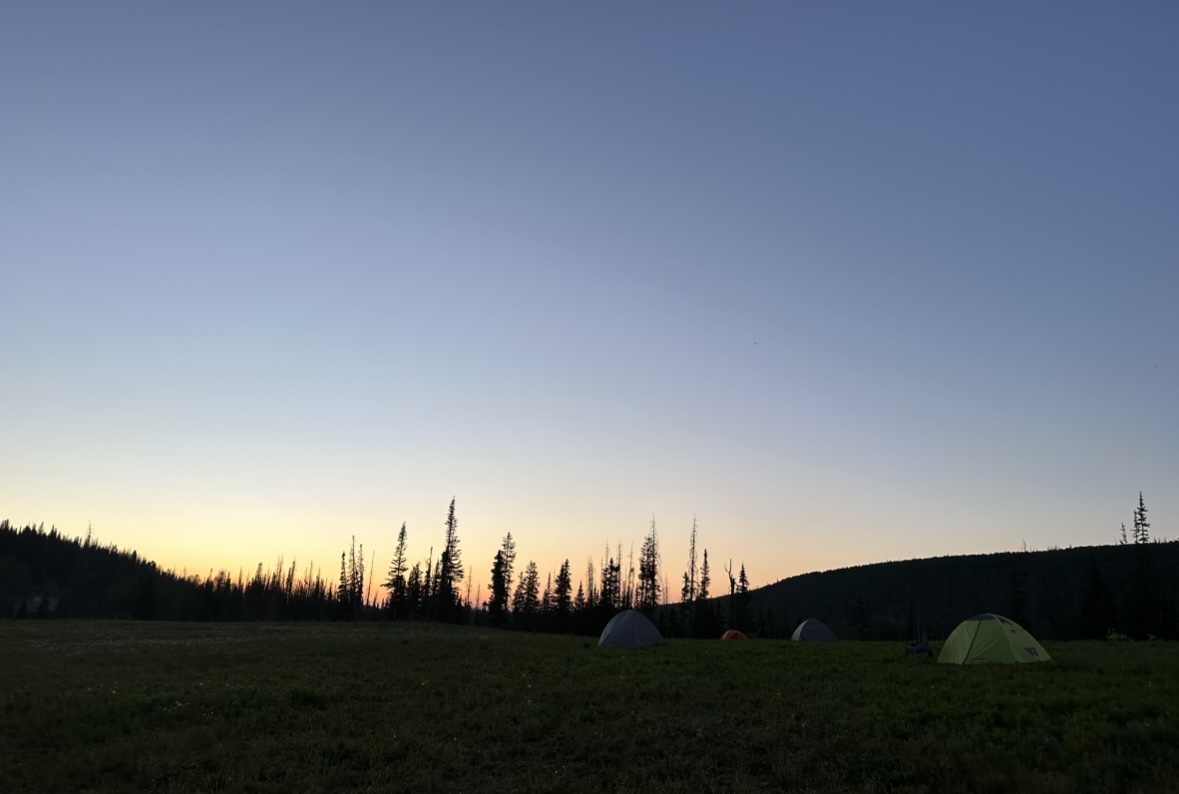
One of many cool aspects of this internship is the amount of collaboration we get to take part in. A team from the Great Basin Institute had been in contact with our FS mentor and so we coordinated with them to complete a Lomatium dissectum (LODI) and BASA population collection. They follow the seeds of success protocol which was extremely useful to see in action! Thank you to Brian for being an amazing lead and mentor!
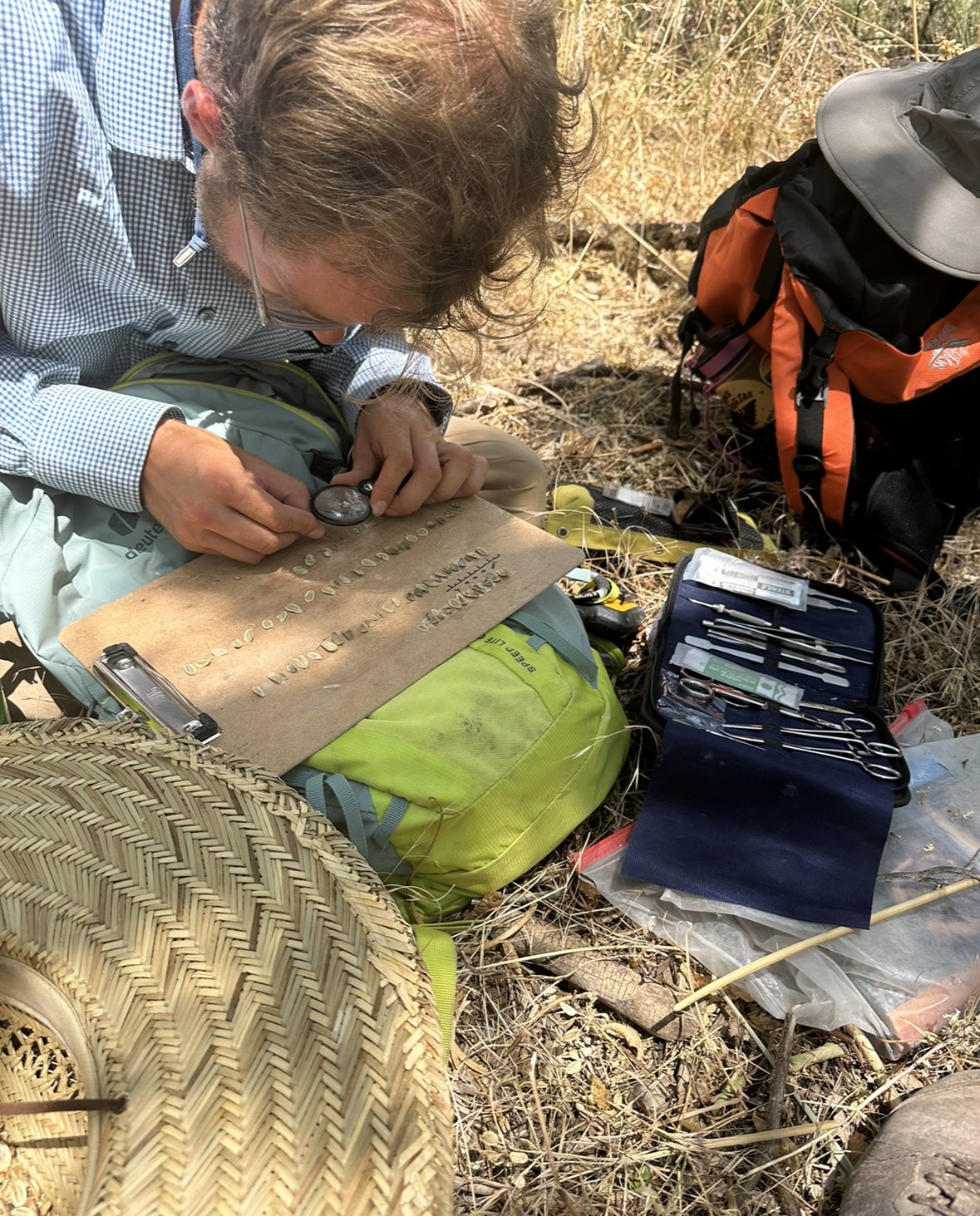
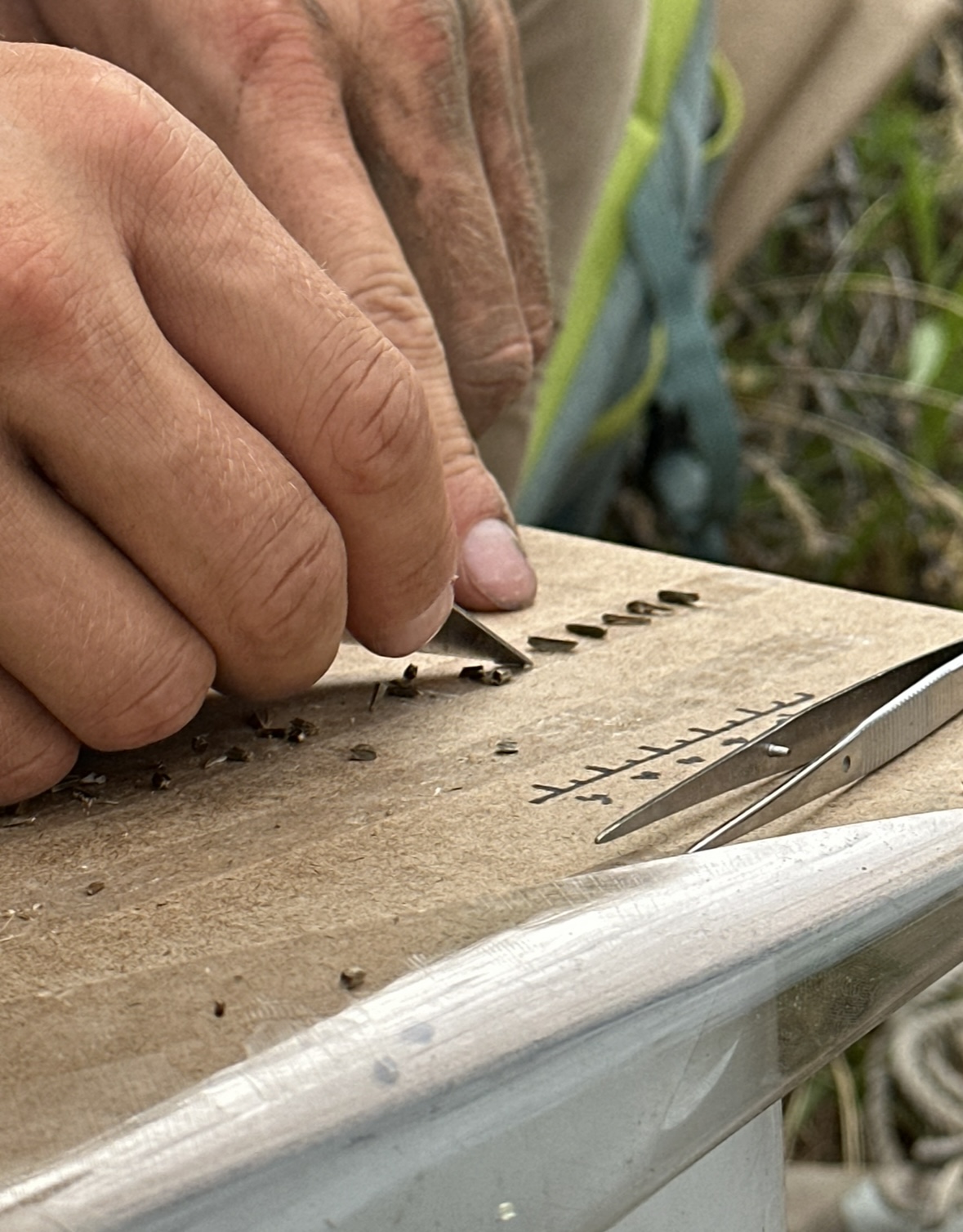
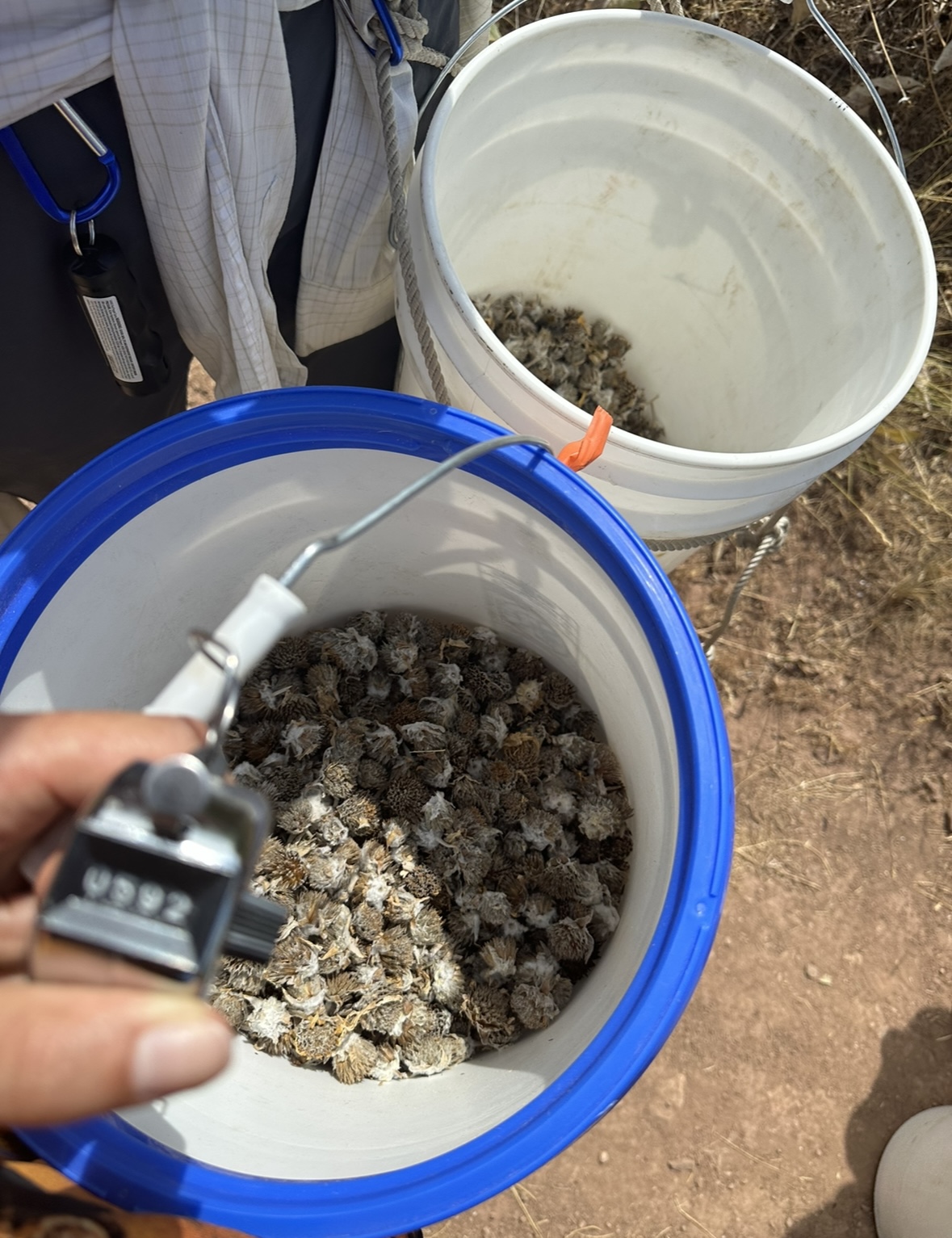
Another blog post means another month has come and gone. I’m enjoying this seasonal internship too much, if that’s possible, and just wish it could be a permanent position 🙂
